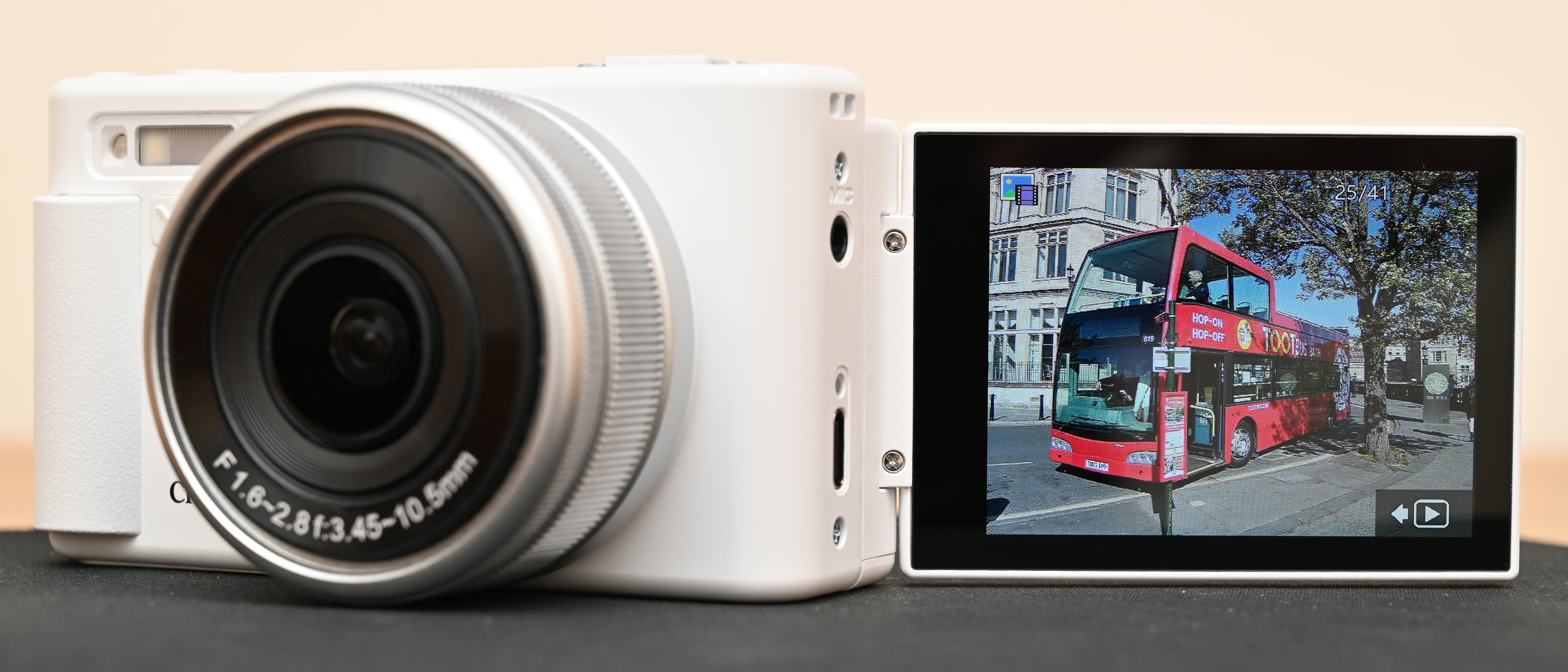Digital Camera World Verdict
The MacBook Pro 16-inch (2021) is a real return to form for Apple, offering a huge amount of power, and new features, that will appeal to professional photographers. However, it’s high price point may put many people off.
Pros
- +
Excellent screen
- +
Fantastic battery life
- +
Great performance with photo editing apps
Cons
- -
Expensive
- -
Large
Why you can trust Digital Camera World
The MacBook Pro 16-inch (2021) is Apple’s follow up to the original 16-inch MacBook Pro, launched back in 2019. While that previous model came with powerful hardware from both Intel (for the processor) and AMD (for the graphics), the new MacBook Pro 16-inch comes packing a choice of Apple’s latest M1 Pro and M1 Max chips.
These chips comprise of both the CPU and GPU, and before we get too into jargon, it means that Apple now designs not just the look of the MacBook Pro, but the hardware within it, as well as the software as well, courtesy of the macOS Monterey operating system.
By controlling almost every aspect of the MacBook Pro 16-inch (2021)’s creation, Apple has been able to shape an incredibly ambitious laptop, and in doing so has not just created the best laptop photographers and photo editors can currently buy, but also one of the most ambitious and exciting products the company has ever created.
Unlike the more affordable MacBook Air (M1, 2020), the new MacBook Pro 16-inch (2021), along with its smaller 14-inch MacBook Pro sibling, which launched alongside it, is aimed squarely at creative professionals - and are undoubtedly the best Macbooks for photo editing ever launched.
This means it comes with a level of performance and several features that won’t appeal to mainstream users. It also comes with a high price tag that a lot of people will find off-putting, but if you’re looking for a powerful workstation laptop for editing photographs on the go, then the asking price could be a wise investment.
The MacBook Pro 16-inch (2021) starts at $2,499 / £2,399 for the model with an M1 Pro chip with a 10-core CPU and 16-core GPU, with 16GB unified memory and 512GB SSD storage.
As with other MacBooks, Apple offers the MacBook Pro 16-inch (2021) with a range of configuration options. The model with an M1 Max chip, which has a 10-core CPU, 32-core GPU, 32GB of faster memory and 1TB SSD, costs $3,499 /£3,299. You can also alter the amount of RAM and storage space depending on your needs and budget.
This is a pricey laptop then, and is an increase over the 2019 model’s starting price of $2,399 /£2,399. However, the changes and upgrades that Apple has introduced with the new model helps justify this kind of asking price, in our view.
Specification

- CPU: Apple M1 Pro (10-core) or Apple M1 Max (10-core)
- Graphics: Integrated 16-core / 24-core / 32-core GPU
- RAM: 16GB / 32GB / 64GB Unified memory
- Screen: 16.2-inch, 3,456 x 2,234 Liquid Retina XDR display (mini-LED, 1,000 nits sustained brightness, wide color P3 gamut, ProMotion technology)
- Storage: 512GB – 8TB SSD
- Ports: 3x Thunderbolt 4 (USB-C), HDMI, SDXC card slot, 3.5mm headphone jack, MagSafe 3
- Connectivity: Wi-Fi 6, Bluetooth 5.0
- Camera: 1080p FaceTime HD webcam
- Weight: 4.7 pounds (2.1kg)
- Size: 14.01 x 9.77 x 0.66 inches (35.57 x 24.81 x 1.68cm); W x D x H)
Key features
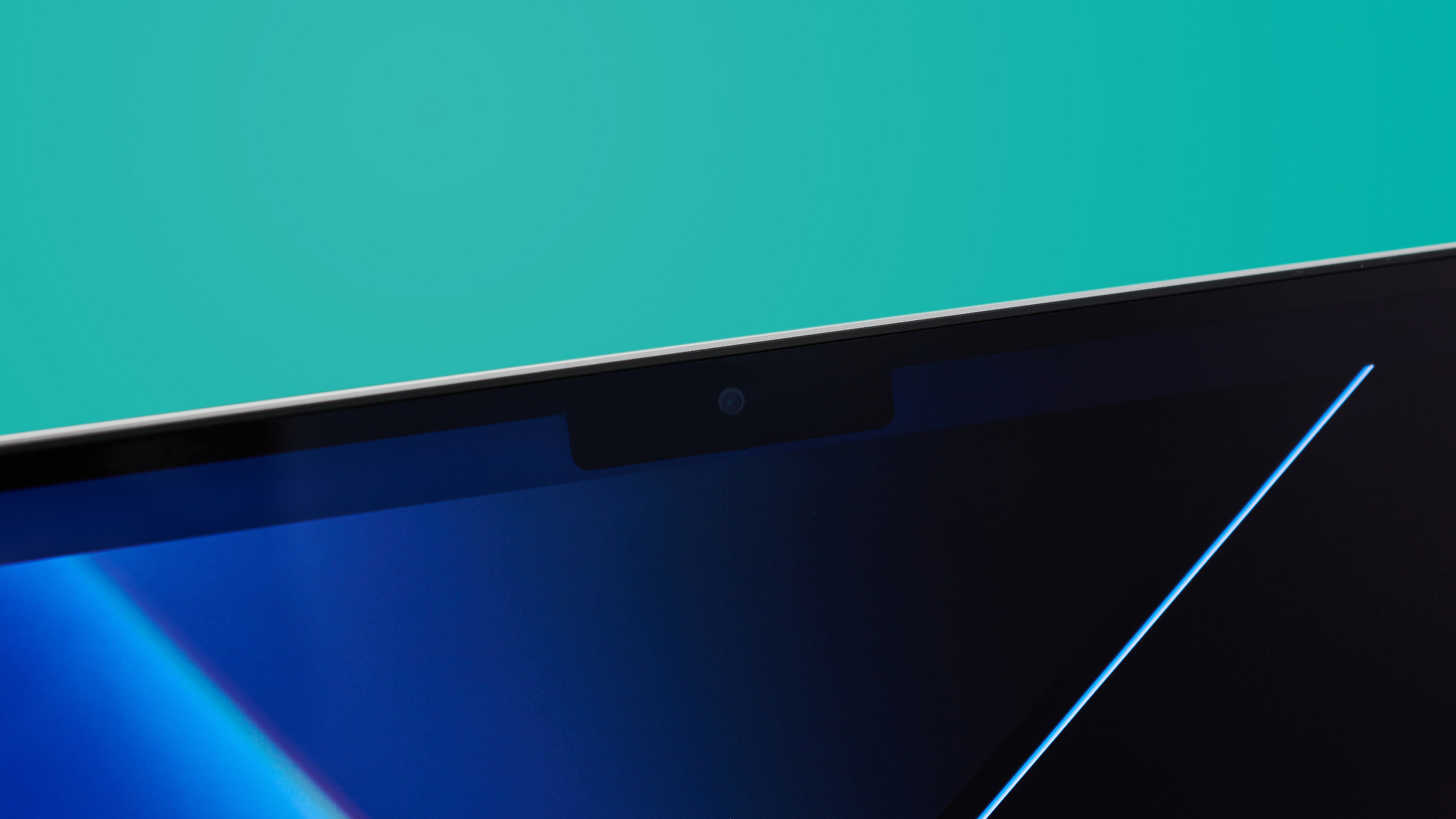
The biggest new feature for the MacBook Pro 16-inch (2021) is the inclusion of a stunning 16.2-inch Liquid Retina XDR display with a 3456x2234 native resolution. Quite simply, it’s the best screen you can currently get in a laptop. Not only is it incredibly high resolution, but it supports the P3 wide colour gamut, offering accurate colours for your photographs.
It also uses mini-LED technology, also found in the new iPad Pro, which offers up to 1,000 nits sustained (full-screen) brightness and 1,600 nits peak brightness, 1 billion colours and a contrast ratio of 1,000,000:1. This leaves photographs looking absolutely stunning, with bright, vivid colours and incredible detail.
It makes editing and viewing photographs on the MacBook Pro 16-inch (2021) a joy, and you don’t need to plug in an external monitor. If you do want to, however, the MacBook Pro 16-inch (2021) can support two external displays with up to 6K resolution at 60Hz with the M1 Pro, and three 6K resolution monitors with the M1 Max. It also comes with a full size HDMI port that can support a single display with 4K resolution and 60Hz refresh rate.
These days when many of us are still working remotely, having a top-notch webcam is incredibly important, and the good news is that the MacBook Pro 16-inch (2021) comes with a new and improved webcam which is now 1080p (up from 720p of previous models), with image processing handled by the M1 Pro or M1 Max chip. The result is an excellent image even in low light levels, and the built-in microphones complement the new webcam well.
Design and usability
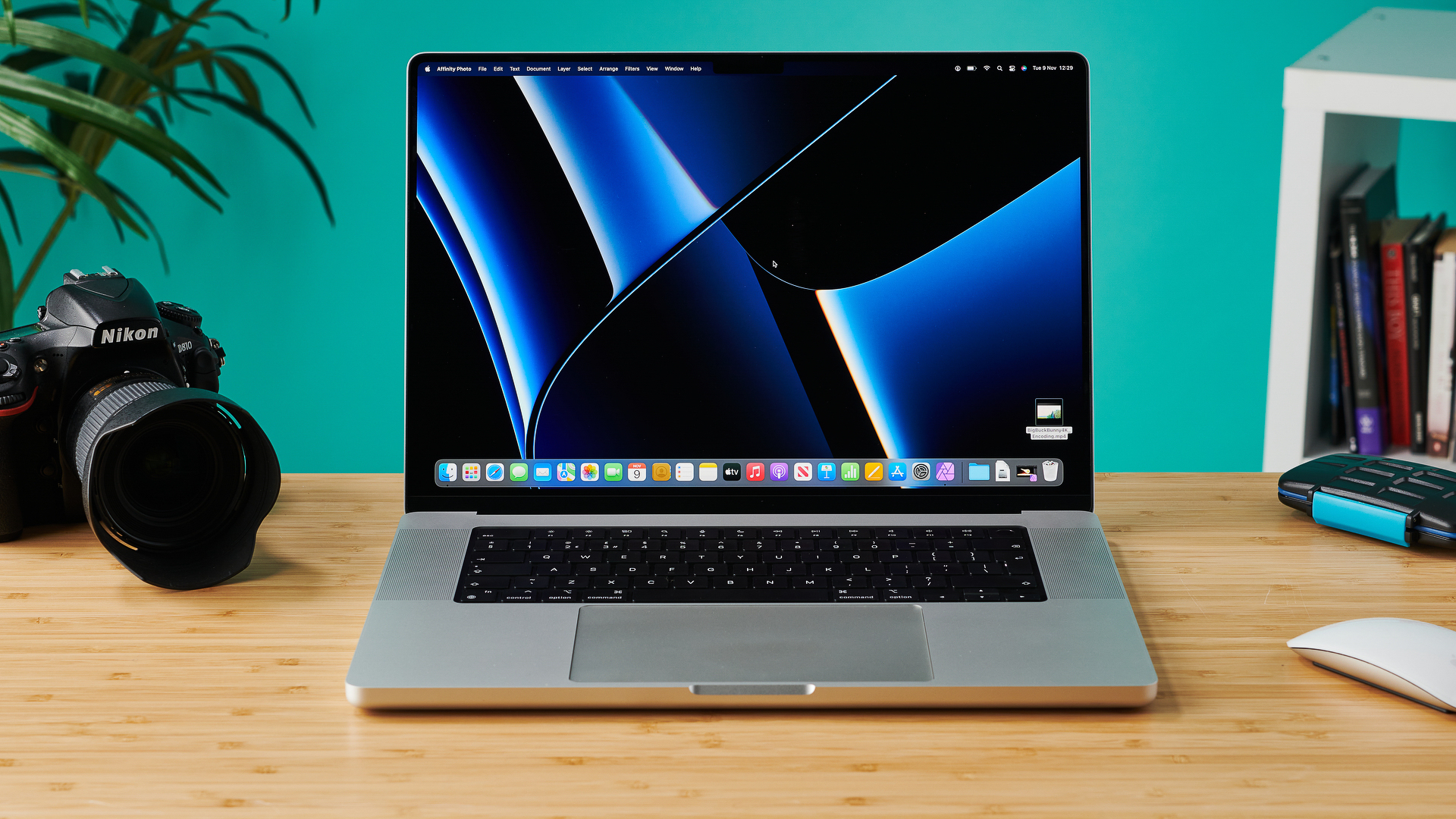
The MacBook Pro 16-inch (2021) gets one of the biggest design overhauls in ages. The bezels around the screen have been slimmed down, resulting in a laptop that looks far more modern. The bezels of previous MacBooks were much thicker, and it made them start to feel outdated when compared to rivals like Dell and HP.
It also allowed Apple to increase the screen size to 16.2-inches, up from 16-inches on the previous model, while not impacting the overall size of the new MacBook Pro 16-inch. It has dimensions of 14.01 x 9.77 x 0.66 inches (35.57 x 24.81 x 1.68cm), so while it retains that iconic Apple design language, this is a big laptop, and that could be off putting for some people.
The extra size has meant there’s now space for a much better selection of ports. MacBooks of the last few years only came with two or four USB-C Thunderbolt ports, which weren’t much use for photographers who needed to plug in their memory cards or hook up external monitors. Instead, you had to use an adaptor.
However, with the MacBook Pro 16-inch (2021), you get three Thunderbolt 4 ports, one HDMI port, an SDXC card slot, and a MagSafe 3 port. This gives you much more scope for plugging in devices without needing an additional adaptor.
The keyboard is comfortable to use and responsive, and you can easily type away for hours without feeling uncomfortable. Apple has cut the Touch Bar that used to run across the top of the keyboard. This was a thin OLED screen that would show context sensitive buttons depending on the app you were using, and while some people liked it, many people thought it was just a gimmick. Apple has retained the Touch ID button, however, which allows you to log in quickly by just using your fingerprint. We found it to be fast and accurate when scanning your finger.
Performance
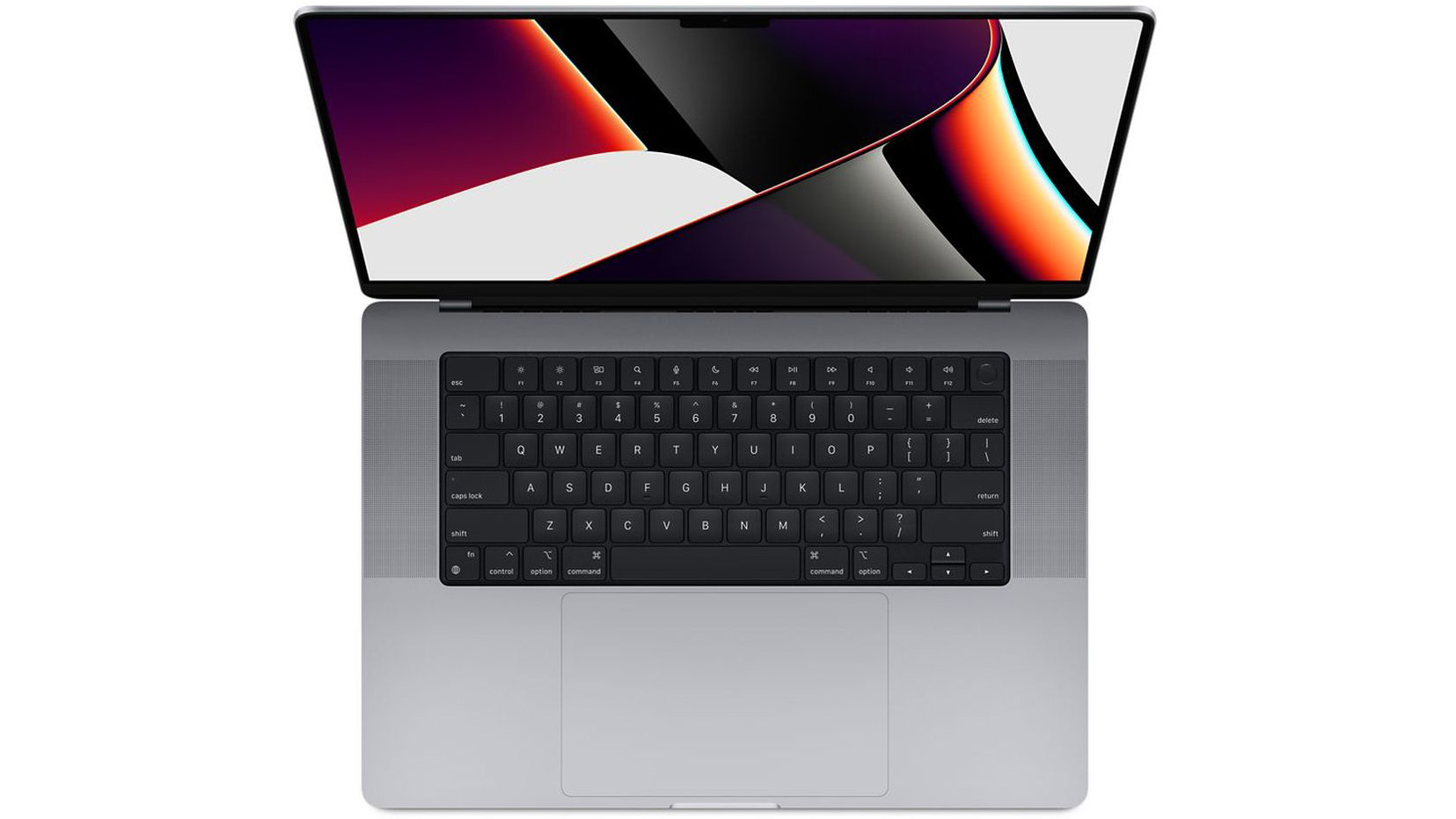
The MacBook Pro 16-inch comes with a choice of the M1 Pro or M1 Max. These are Apple’s latest chips that provide both the processing (CPU) and graphical (GPU) power for the new MacBook Pro, and they are an iteration of the M1 chip that debuted last year with the MacBook Air and MacBook Pro 13-inch. Apple has been designing chips for a while now that power its iPhone and iPad devices, so it wasn’t too surprising to see it break with its Intel partnership, and use its expertise to create chips for its MacBook and Mac devices.
What was surprising, however, was just how good the M1 chip was, and the M1 Pro and M1 Max improve on this further. We spent time with both version of the MacBook Pro 16-inch, with the M1 Pro offering up to 32GB of unified memory with a bandwidth of 200GB/s. The CPU is made up of eight high-performance cores and two high-efficiency cores, and graphics are provided with a 16-core GPU with 2,048 execution units, and a performance of 5.2 teraflops.
The M1 Pro, then, is incredibly powerful, and in our tests, where we ran numerous applications at once, including both Affinity Photo and Adobe Photoshop, and the MacBook Pro 16-inch was fast and responsive, even when on battery. During our tests, it remained silent as well, with the fans never kicking in, even when we played around with some advanced effects. The photos we edited looked fantastic as well – not so much because of our ability as photographers, but thanks to the stunning screen we talked about earlier. Photographs were bright, detailed and vibrant.
Battery life was also excellent. We ran a benchmark that looped a 1080p video until the battery ran out, and it lasted 18 hours and 50 minutes. Considering the power offered by the MacBook Pro 16-inch, this is a remarkable battery life, and means you can easily use it unplugged for an entire workday without worrying about finding a place to charge it.
The M1 Pro version of the MacBook Pro 16-inch was so good, that it makes the M1 Max version a bit harder to justify for photographers. It’s much more powerful, with support for twice the amount of memory (which is also faster), and has up to a 32 core GPU with 4,096 execution units, twice as many as the M1 Pro. However, this level of performance is more suitable for ultra high resolution video editing and 3D modelling. If you’re only going to be editing photos, then the M1 Pro model is a much wiser investment.
Verdict
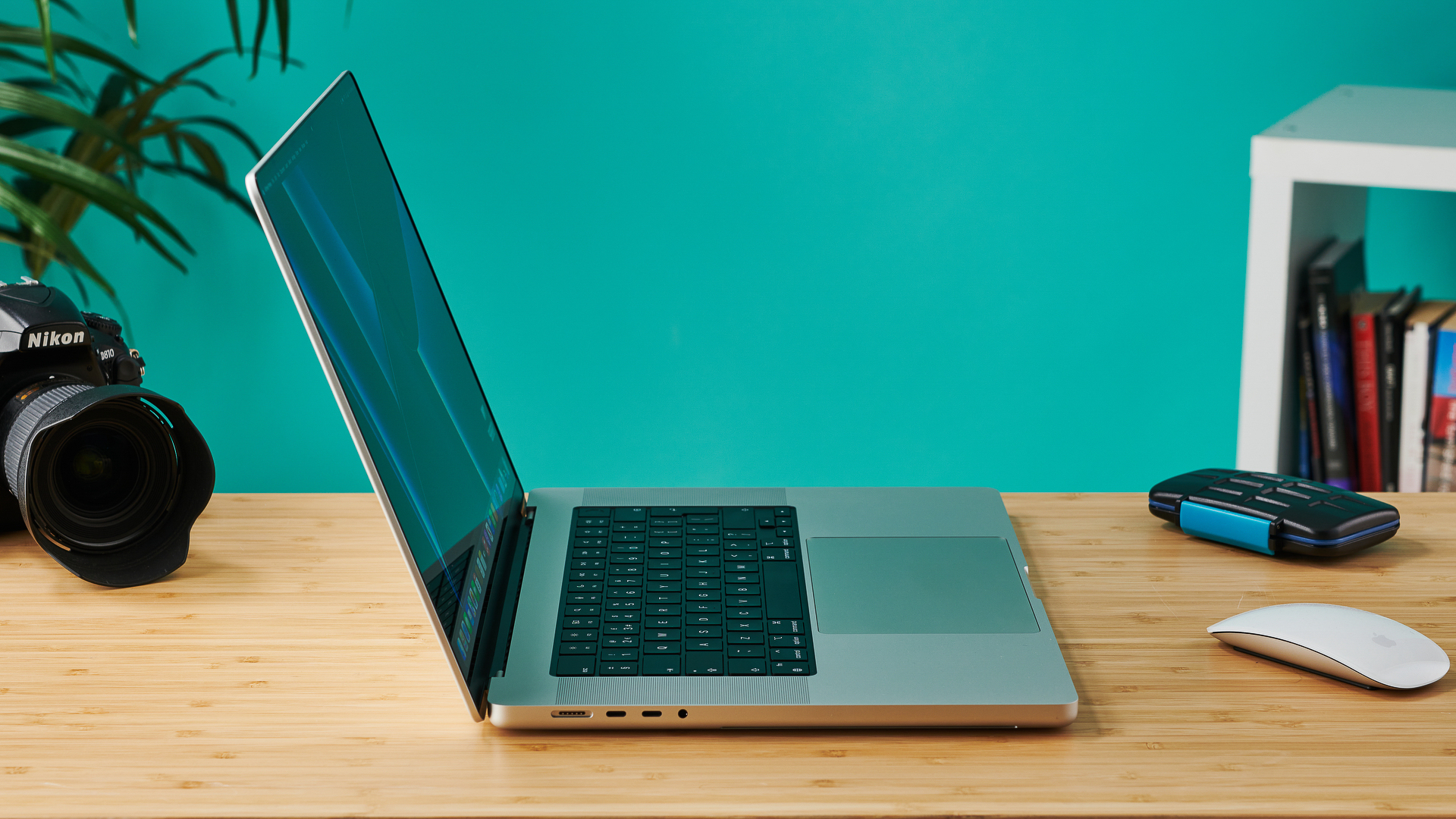
Overall, Apple has once again made the best laptop you can buy right now for photographers. Its large, high resolution, screen is simply gorgeous, and makes editing photos a joy. The screen is now also larger, and it has one of the longest battery lives in a laptop.
It’s also got plenty of ports, including a memory card slot, which definitely makes things easier for photographers, and performance is excellent. If you’re thinking about specs, we recommend the M1 Pro model with 16GB memory and a large SSD – you can fit in up to 8TB of storage.
It’s expensive, but for many photographers, it’ll be well worth the investment.
Other guides
• Home working for photographers
• Best student laptops
• Best Chromebooks
• Best Ultrabooks
• Best photo editing laptops
• Best laptops for video editing
• Best desktop computers
• Best Mac printer
• Best external hard drives
• Best monitors for photo editing
• Best USB-C hubs
Matt is TechRadar's Managing editor of core tech. Having written for a number of magazines and websites, there's no aspect of technology that Matt isn't passionate about, especially laptops and PC gaming.



